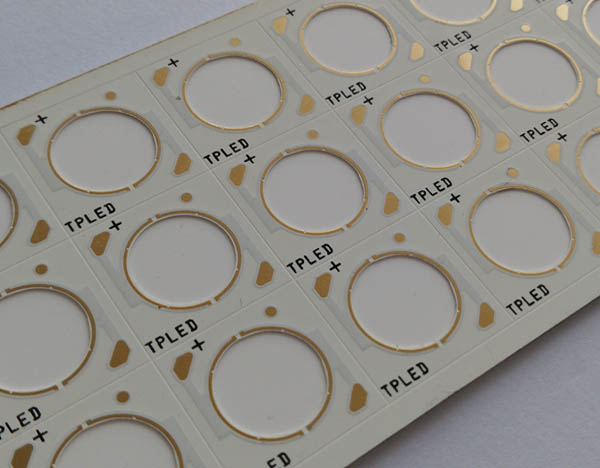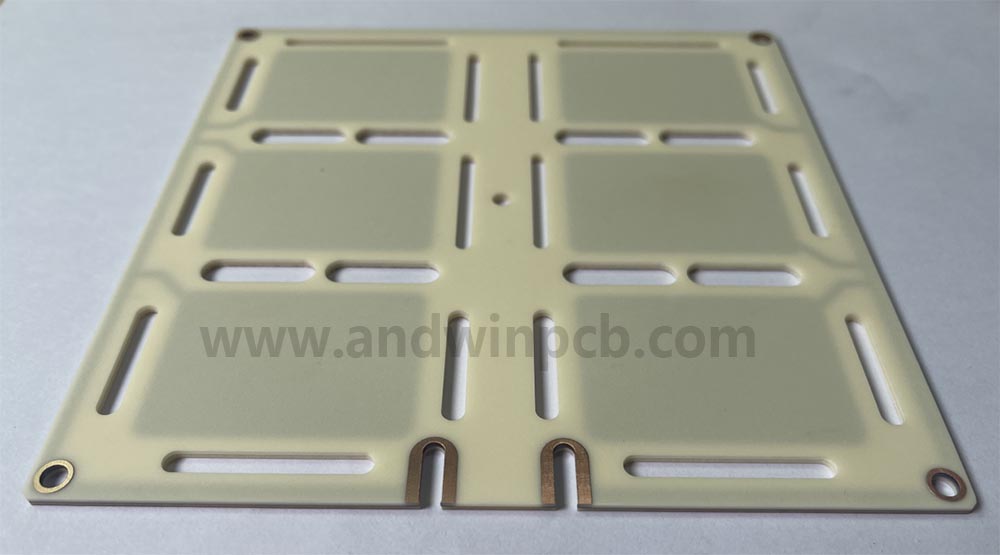Ceramic Core PCB: An In-depth Analysis
Introduction:
In the world of electronics, printed circuit boards (PCBs) play a crucial role in providing
a solid foundation for the assembly of various electronic components. PCBs are essentially
flat boards made of non-conductive materials, such as fiberglass or epoxy, with conductive
pathways etched or printed onto them. These pathways, also known as traces, allow for
the flow of electrical signals between different components on the board.
Traditionally, PCBs have been manufactured using materials like FR4, a type of fiberglass-reinforced
epoxy laminate. However, with the advancement of technology and the increasing
demand for higher performance and reliability, alternative materials have emerged.
One such material is ceramic, which has gained significant attention in recent years
due to its unique properties and advantages over traditional PCB materials.

Advantages of Ceramic Core PCBs:
Thermal Conductivity: One of the primary advantages of ceramic core PCBs is their
exceptional thermal conductivity. Ceramic materials, especially aluminum nitride and
beryllium oxide, have significantly higher thermal conductivity compared to traditional
PCB materials like FR4. This allows for efficient heat dissipation, reducing the risk of
component overheating and improving overall system reliability.
High Power Handling: Due to their excellent thermal conductivity, ceramic core PCBs
can handle higher power levels without compromising performance or reliability. This
makes them suitable for power electronics applications, such as high-power LED lighting,
power supplies, motor drives, and automotive electronics.
Electrical Insulation: Ceramic materials used in ceramic core PCBs provide excellent
electrical insulation properties, preventing electrical leakage and short circuits. This is
particularly important in applications where high voltages or high-frequency signals are involved.
Dimensional Stability: Ceramic core PCBs exhibit exceptional dimensional stability, even
under extreme temperature variations. This ensures that the board remains structurally
intact and maintains its electrical performance over time, making them suitable for applications
subjected to thermal cycling or high-temperature environments.
Reliability in Harsh Environments: Ceramic core PCBs offer superior resistance to moisture,
chemicals, and other environmental factors. This makes them highly reliable in harsh operating
conditions, such as aerospace, automotive, and industrial applications.
Applications of Ceramic Core PCBs:
LED Lighting: Ceramic core PCBs find extensive use in high-power LED lighting applications.
The superior thermal conductivity of ceramic materials allows for efficient heat dissipation,
ensuring the longevity and performance of LED modules.
Power Electronics: With their high power handling capabilities and excellent thermal
management, ceramic core PCBs are widely used in power electronics applications.
These include power supplies, motor drives, inverters, and electric vehicle charging systems.
Automotive Electronics: The automotive industry demands robust and reliable electronic
systems capable of withstanding harsh operating conditions. Ceramic core PCBs, with
their thermal conductivity, electrical insulation, and environmental resistance properties,
are well-suited for automotive applications, including engine control units, lighting systems,
and battery management systems.
Aerospace and Defense: The aerospce and defense sectors require electronic systems
that can withstand extreme temperatures, vibrations, and other challenging conditions.
Ceramic core PCBs offer the necessary reliability and performance for avionics, radar
systems, satellite communications, and military-grade electronics.
Industrial Equipment: Industrial applications often involve high-power electronics and
demanding operating environments. Ceramic core PCBs are used in industrial equipment
such as motor controllers, power converters, and robotics, where thermal management and reliability are critical.

Challenges and Considerations:
While ceramic core PCBs offer numerous advantages, there are some challenges and
considerations that need to be addressed during their design and manufacturing process.
Cost: Ceramic materials, especially aluminum nitride and beryllium oxide, are more expensive
compared to traditional PCB materials like FR4. This can significantly impact the overall
cost of ceramic core PCBs, making them less suitable for cost-sensitive applications.
Design Complexity: Ceramic core PCBs require careful consideration of thermal management
and electrical insulation during the design phase. The higher thermal conductivity of ceramic
materials can lead to localized hotspots if not properly managed, while the electrical insulation
properties need to be maintained to prevent short circuits.
Material Compatibility: Ceramic materials have different coefficients of thermal expansion (CTE)
compared to other commonly used materials in electronic components, such as silicon and copper.
This CTE mismatch can lead to mechanical stress and potential reliability issues, requiring proper
design and material selection to mitigate these effects.
Manufacturing Expertise: The fabrication of ceramic core PCBs requires specialized manufacturing
techniques and expertise due to the unique properties of ceramic materials. Manufacturers need to
have the necessary equipment, knowledge, and experience to ensure the successful production of ceramic core PCBs.

Conclusion:
Ceramic core PCBs offer a compelling solution for applications that demand high power
handling, efficient heat dissipation, and reliability in harsh operating conditions. The exceptional
thermal conductivity, electrical insulation, and environmental resistance properties of ceramic
materials make them ideal for various industries, including LED lighting, power electronics,
automotive, aerospace, and industrial equipment.
While ceramic core PCBs come with certain challenges and considerations, the benefits they
offer outweigh these limitations in many cases. As technology continues to advance and
demands for high-performance electronics increase, ceramic core PCBs are expected to
play an increasingly significant role in meeting these requirements.
Design Complexity: Ceramic core PCBs require careful consideration of thermal management
and electrical insulation during the design phase. The higher thermal conductivity of ceramic
materials can lead to localized hotspots if not properly managed, while the electrical insulation
properties need to be maintained to prevent short circuits.
Material Compatibility: Ceramic materials have different coefficients of thermal expansion (CTE) compared to other commonly used materials in electronic components, such as silicon and copper. This CTE mismatch can lead to mechanical stress and potential reliability issues, requiring proper design and material selection to mitigate these effects.
Manufacturing Expertise: The fabrication of ceramic core PCBs requires specialized manufacturing techniques and expertise due to the unique properties of ceramic materials. Manufacturers need to have the necessary equipment, knowledge, and experience to ensure the successful production of ceramic core PCBs.
Other PCB products, you may interesting









